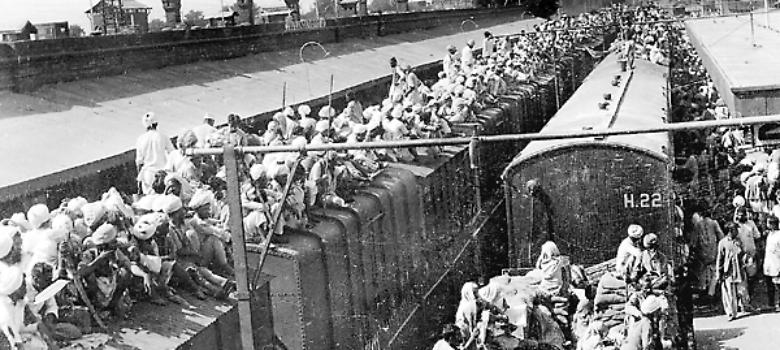
6.7 Partition Problems
The Chittagong Hill Tracts had a mostly Buddhist population, but they were given to East Pakistan (now Bangladesh).
To counterbalance the relatively small share of Gurdaspur district awarded to Pakistan, Radcliffe attempted to instead transfer Ferozepur and Zira tehsils in Muslim-Majority Ferozepur District to Pakistan. This was opposed by the Maharaja of Bikaner because Harike did work on the confluence of the Sutlej and the Beast rivers, from where a canal originated, as the only source of water for his desert state was in Ferozepur. It was only after he threatened Lord Louis Mountbatten, that he would accede his princely state to Pakistan if Firozpur was awarded to West Punjab province, that the award was changed at the last minute and all of Firozpur District was awarded to East Punjab in the Republic of India.
The Gurdaspur District was mostly Muslim, but was given to India.
Sometimes the line divided villages, so one part of the village was in each country. At other instances, it went through houses, different rooms of the same house were in different countries
On 18th July, 1947, British Parliament ratified the Mountbatten Plan as the Independence of India Act, 1947.
The act provided for the creation of two independent dominions of India and Pakistan. Each dominion was to have a Governor- General to be responsible for effective operation of the act.
Sovereignty of British power was to be abolished.
Integration of States
Vallabhbhai Patel, played the most important role in the integration of states. Except Kashmir, Hyderabad and Junagadh, all states signed an instrument of accession with the Indian Government. In October 1947, the Pakistani troops invaded Kashmir and in the crisis, the Maharaja of Kashmir acceded to the Indian Union.
Through a referendum in the state of Junagarh in February 1948, Junagarh was merged into the Indian Union. The Nawab left for Pakistan.
Due to the pressure of internal anarchy and military action (operation Polo) in the state, the Nizam of Hyderabad was forced to join the Indian Union.
Integration of French Colonies Pondicherry, Chandranagar, Mahe, Karaikal and Yaman were integrated by the end of 1954.
Integration of Portuguese Colonies Dadra and Nagar Haveli (1954); Goa and Daman and Diu (1961).
Here is a summary of seven important points from the Indian National Movement between 1935 and 1947:
1. Government of India Act, 1935
Event: The British Parliament passed the Government of India Act, 1935, which aimed to introduce federalism in India.
Significance: This act provided for the establishment of an All India Federation and provincial autonomy. It also extended the franchise and introduced direct elections, but it fell short of granting full independence.
2. Formation of the All India Forward Bloc (1939)
Event: Subhas Chandra Bose formed the All India Forward Bloc within the Indian National Congress in 1939.
Significance: The Forward Bloc was intended to consolidate the political left and create a radical alternative to the mainstream Congress leadership. Bose's actions underscored the divisions within the Congress regarding the approach to achieving independence.
3. Quit India Movement (1942)
Event: The Indian National Congress launched the Quit India Movement on August 8, 1942, following Mahatma Gandhi's call for immediate British withdrawal from India.
Significance: This mass protest was marked by widespread acts of civil disobedience and was met with brutal repression by the British. Many leaders, including Gandhi, were arrested, but the movement demonstrated the intensity of India's demand for independence.
4. Formation of the Indian National Army (INA)
Event: Subhas Chandra Bose reorganised the Indian National Army (INA) in 1943 with the aim of overthrowing British rule through armed struggle.
Significance: The INA's efforts, particularly the campaign in Burma and Northeast India, inspired a sense of nationalism and showcased the willingness of Indians to fight for independence.
5. Simla Conference (1945)
Event: The Simla Conference was convened by the British in June 1945 to discuss the future of India and to plan the transfer of power.
Significance: The conference failed due to disagreements between the Congress and the Muslim League, highlighting the growing demand for a separate Muslim state by the Muslim League.
6. Cabinet Mission Plan (1946)
Event: The British government sent a Cabinet Mission to India in 1946 to discuss the transfer of power to Indian leadership.
Significance: The plan proposed a united India with a federal structure, but it was ultimately rejected by both the Congress and the Muslim League, leading to increased communal tensions and setting the stage for partition.
7. Independence and Partition of India (1947)
Event: India gained independence from British rule on August 15, 1947, following the Mountbatten Plan, which also led to the partition of India and the creation of Pakistan.
Significance: The partition resulted in massive communal violence and displacement, but it marked the end of colonial rule and the emergence of two sovereign nations, India and Pakistan.
